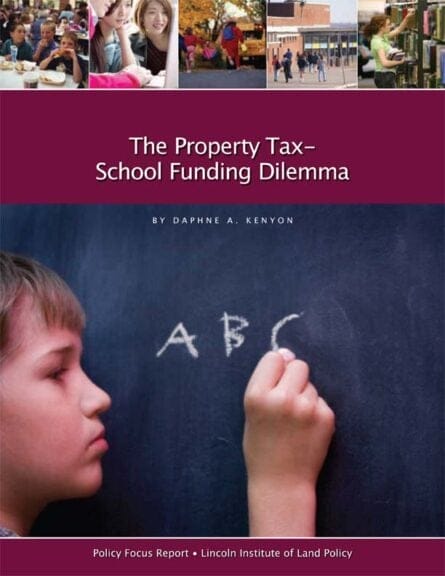Policy Focus Report
PDF
| Free
|
63 pages
Download PDF

This report seeks to correct common misconceptions surrounding the practice of relying on the proprety tax to fund public schools. Through a comprehensive review of research and seven case studies, it offers recommendations that policy makers can use both to provide significant property tax relief and improve state funding for public education.
Read an updated version of this report, published in 2022.
About the Author
Daphne A. Kenyon is a resident fellow in tax policy at the Lincoln Institute of Land Policy.
Keywords
Assessment, Economics, Legal Issues, Local Government, Municipal Fiscal Health, Property Taxation, Public Finance, Public Policy, Taxation, Valuation
